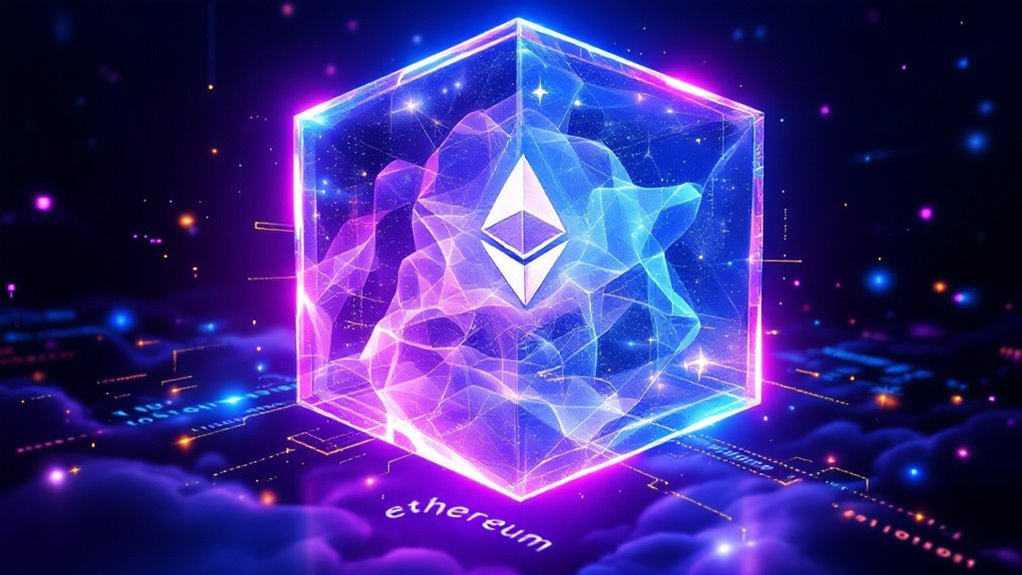NFT investing requires careful navigation of digital art and asset marketplaces like OpenSea and Nifty Gateway. Smart investors diversify across different NFT types while managing risks through thorough research and community engagement. Success demands understanding blockchain technology, market dynamics, and creator reputations. Though pixel art can fetch millions while masterpieces go unnoticed, strategic planning and timing remain essential. The evolving NFT landscape holds both perils and possibilities for those willing to venture deeper.

Revolution often arrives wearing unexpected clothes. In the digital age, that revolution has taken the form of NFTs – unique digital tokens that are transforming how we think about ownership, art, and value. Like digital snowflakes captured in crystalline blockchain code, these non-fungible tokens represent something both puzzling and fascinating to traditional investors. The success of Amitabh Bachchan's auction demonstrates the significant market potential these digital assets hold. Each token exists as a unique blockchain entry that provides irrefutable proof of ownership.
NFTs dance on the edge of digital innovation, challenging our understanding of what makes something truly unique and valuable.
The NFT landscape sprawls across various marketplaces, each with its own character and community. OpenSea stands as the bustling Times Square of the NFT world, while curated platforms like Nifty Gateway offer a more gallery-like experience. Getting started requires a digital wallet – think of it as a sophisticated piggy bank that speaks the language of cryptocurrency – and some Ethereum to fuel transactions. Typical creator royalties range from 1% to 10% of each secondary sale.
Understanding NFT value feels like trying to catch lightning in a bottle. Traditional metrics like scarcity and creator reputation matter, but so does the buzz humming through Discord channels and Twitter threads. A simple pixel art piece might sell for millions while technically superior artwork goes unnoticed, challenging conventional wisdom about artistic value.
Smart investors approach NFTs with a blend of enthusiasm and caution, like explorers mapping uncharted territory. They diversify their holdings across different types of NFTs, from digital art to virtual real estate, knowing that putting all their eggs in one digital basket could lead to virtual heartbreak. The market's volatility can turn digital gold into pixels overnight.
The NFT market tells a story of staggering growth, with sales volumes that would make traditional art dealers spill their coffee. Yet beneath the surface lurk risks: smart contract vulnerabilities, copyright disputes, and the ever-present possibility of market manipulation. Like any frontier technology, NFTs exist in a regulatory gray area where tomorrow's rules remain unwritten.
For those brave enough to venture into this digital frontier, success requires equal parts research, timing, and community engagement. The future of NFTs might lie not just in collecting digital trinkets, but in reimagining how we interact with digital ownership and value in an increasingly virtual world.
Frequently Asked Questions
How Do I Protect My NFTS From Being Stolen or Hacked?
To prevent NFT theft and hacking, users should utilize hardware wallets, enable two-factor authentication, maintain strong passwords, avoid sharing private keys, and regularly monitor account activity through secure, reputable marketplaces.
Can I Create and Sell My Own NFTS Without Technical Knowledge?
Yes, anyone can create and sell NFTs using no-code platforms like OpenSea or Rarible. Simply connect a crypto wallet, upload digital content, complete metadata fields, and list the NFT for sale.
What Happens to My NFTS if the Marketplace Platform Shuts Down?
NFTs remain securely on the blockchain even if marketplaces shut down. Owners maintain access through their wallets and can trade on alternative platforms, though metadata accessibility may depend on storage decentralization methods used.
Are NFT Transaction Fees Tax-Deductible When Reporting Investment Gains?
Yes, NFT transaction fees are tax-deductible. Exchange fees, gas fees, and marketplace fees can be added to cost basis when buying or subtracted from proceeds when selling, effectively reducing taxable gains or increasing losses.
How Do I Verify the Authenticity of an NFT Creator's Identity?
Investors can verify NFT creators through blockchain explorers, digital signature validation, verified marketplace badges, and social media presence. Cross-referencing multiple verification methods provides the most reliable authentication of a creator's identity.









